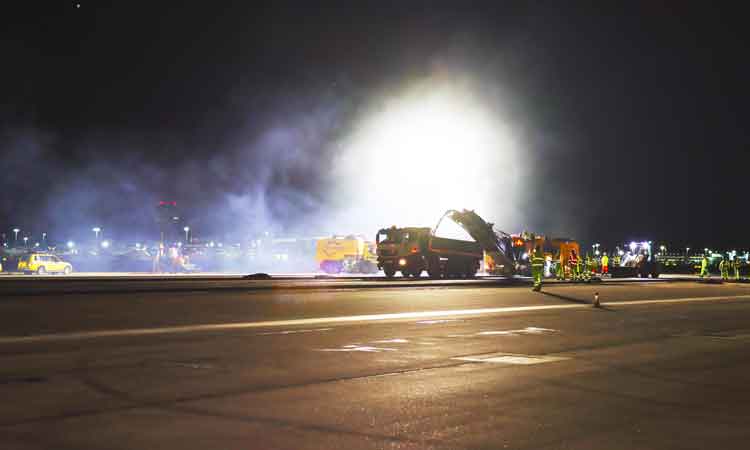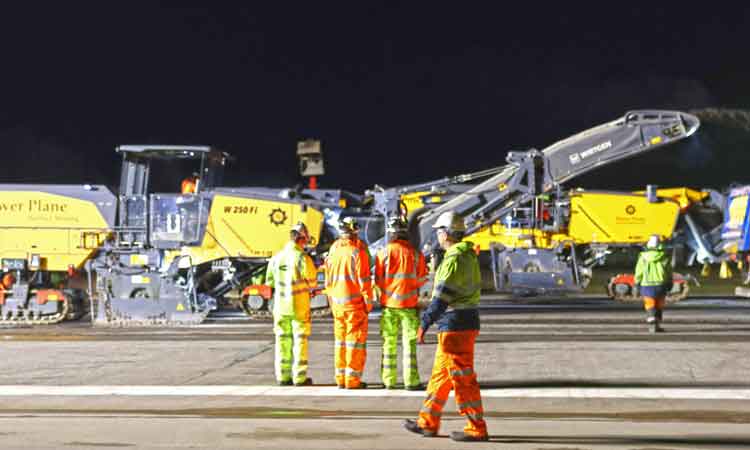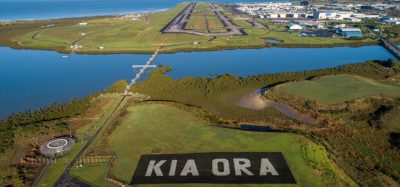London Gatwick Airport rewrites the runway resurfacing rule book
- Like
- Digg
- Del
- Tumblr
- VKontakte
- Buffer
- Love This
- Odnoklassniki
- Meneame
- Blogger
- Amazon
- Yahoo Mail
- Gmail
- AOL
- Newsvine
- HackerNews
- Evernote
- MySpace
- Mail.ru
- Viadeo
- Line
- Comments
- Yummly
- SMS
- Viber
- Telegram
- Subscribe
- Skype
- Facebook Messenger
- Kakao
- LiveJournal
- Yammer
- Edgar
- Fintel
- Mix
- Instapaper
- Copy Link
Posted: 18 October 2022 | London Gatwick Airport (LGW) | No comments yet
An innovative and sustainable approach to resurfacing its main runway significantly reduced costs, resources and time taken while the airport remained fully operational. London Gatwick explains more about this feat of planning and engineering.
London Gatwick, part of VINCI Airport’s network, has just resurfaced its main runway while also flying one of the busiest schedules of any European airport – a project described as performing open heart surgery while the patient is jogging.
The airport is known for operating the world’s most efficient single runway – and apart from the odd hour – it always has aircraft movements, so complete closure was never an option.
The non-instrumented Northern Runway can be used during quieter periods late at night while the main runway is being resurfaced, but with limits on the type and frequency of aircraft.
With such a busy schedule however, any failure to hand back the main runway at 05:30 would be frontpage news. Replacing the entire runway surface in eight-hour possessions each night would also take two summer seasons to complete, as work can only be done when the weather is good enough to use the Northern Runway.
Innovative thinking was therefore needed and the result – completed in September – has seen Gatwick Airport resurface its main runway in half the time, for significantly less cost and in a sustainable way.
Pandemic: back to the drawing board
This project had a four-year design stage – longer than expected due to the pandemic.
Andy Mansell, Senior Project Engineer, Gatwick Airport, said: “COVID-19 allowed us to go back to the drawing board and optimise the solution.
“It allowed us to rethink the original principles. Given the financial challenges over the past few years, we were tasked with delivering the best and most sustainable solution for the minimum practical budget. We also knew it could not take two years to complete as parts of the runway already required regular maintenance.
“It sounds obvious now, but by rethinking, we realised there was no need to do something that was more than necessary. So, we drew up plans to resurface only the most trafficked parts of the main runway. The rest was in good condition and still had seven to 10 years life.”
Resurfacing just the most trafficked areas meant focusing on the area where aircraft land and exit the runway, as these parts get used the most. This meant 40,000 tonnes of new asphalt was laid, more than 100,000 less than originally planned.
Consistent with VINCI Airports’ environmental commitment, this optimised efficient use of materials and saved significant amounts of embodied carbon – the emissions associated with materials and construction throughout the lifecycle of the infrastructure.
All of the old asphalt material was also recycled as aggregate in road construction, and a temporary on-site asphalt batching plant reduced lorry journey time, travel distance and emissions.
This highly innovative approach moved away from the traditional method where sections of the old runway surface is replaced with two layers, laid over two nights. Instead, a resurfacing technique was developed that saw both layers laid in a single night – saving time.
“The project took six months to complete, half the normal time, and we think we’ve achieved the best balance possible between cost, disruption and durability whilst reducing the environmental impact of construction. The cost savings can now also be reinvested in improvements across other parts of the airport,” continued Andy.


Extreme co-ordination and war games
A project of this scale and risk required careful planning, co-ordination and effective teamwork.
This included war gaming exercises with the results feeding into a play book of contingency plans covering a wide range of possible scenarios, from asphalt not cooling in time to lighting failures, and not having enough asphalt to finish the works.
Graham Alder, Gatwick’s Head of Aerodrome, said: “Our approach was to use our Northern Runway between 21:30 and 05:30. The priority was to ensure that conditions were absolutely right so we could hand back the main runway every morning.”
Without an Instrument Landing System on the Northern Runway, poor weather conditions could prevent it being used, so daily go/no go decisions gave the airport the sensitivity to react quickly. Work could therefore be called off at short notice if, for example, a low cloud base created poor visibility, or if the airport needed to recover from disruption during the day.
“As chief sponsor for the project, my job was to also create a drumbeat of awareness and understanding among the entire airport community, and to ensure effective two-way communication, through a multitude of daily calls and channels,” Graham continued.
“It was key that everyone worked seamlessly together every day. The team effort was huge, from the 100 or so on site every night, to several hundreds more behind the scenes. The project would not have been successful without this level of coordination and communication.”
In parallel, the airport had to maintain a high-capacity operation so precise calculations were done to make sure the Northern Runway could operate at maximum capacity each night.
“It was essential we had the right air traffic mix to maximise the operation on our Northern Runway,” Graham continued. “We had to carefully work out how quickly each type of aircraft could exit the Northern Runway and also the spacing between them in the air so we knew how many aircraft we could handle each night.”
The future and Gatwick’s Northern Runway plan
Gatwick’s freshly resurfaced main runway now has a seven-year design life. This timeline dovetails with the airport’s current schedule to bring its Northern Runway into regular use, alongside its main runway. If approved, the airport’s low impact plans would reduce delays, bring new global connections, and allow the airport to grow, serving 75 million passengers a year by 2038.
“We will take learnings from the resurfacing programme we’ve just completed into our Northern Runway plan,” continued Andy. “New asphalt technology is also evolving. Experts from VINCI Airports network are working on new products that can improve durability, so it’s possible that major resurfacing projects like this become less frequent in the years ahead.”


- London Gatwick Airport’s main runway is 3,337m long, 44m wide, surface area 280,000m2 (1,430 tennis courts) and was built in stages from 1950s
- This is the runway’s fifth rehabilitation of its lifetime
- Busiest days mean 950+ movements
- Gatwick’s Northern Runway cannot sustain entire operation or operate in poor weather
- The airport’s main runway was downgraded to Cat 1 during the work, with nightly runway possessions between 21:30 – 05:30


















